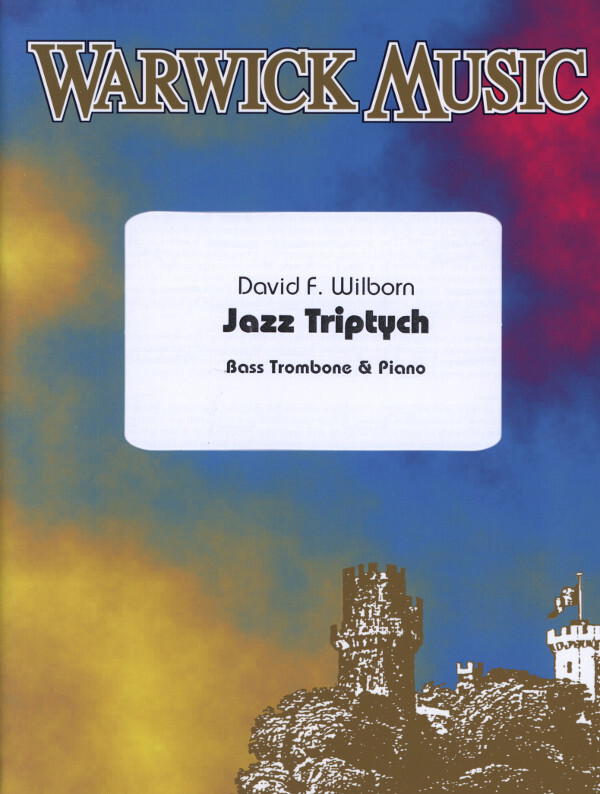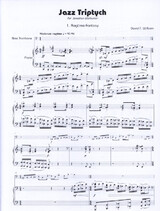Jazz Triptych for Bass Trombone & Piano
für Bassposaune (Tuba) und Klavier
 Warwick MusicGenre:
Warwick MusicGenre:  Jazz / SwingEdition: sheet musicArt-Nr.: K32563 / WARWTB1017 Level:
Jazz / SwingEdition: sheet musicArt-Nr.: K32563 / WARWTB1017 Level:
Jazz Triptych was written at the request of English bass trombonist Jonathan Warburton. It is a setting of three diverse jazz styles in a concert setting for bass trombone and piano. Each movement captures characters and rhythmic features of a particular jazz genre. Although originally composed, each movement references the compositional style of historical masters who are credited for making their own style of jazz popular. The movements express the idea of the composer meeting each historical figure individually in an attempt to gain a better understanding of their jazz style. Figuratively, the composer sets out on a pleasant walk with each composer for an interview. The result is a fusion of compositional ideas in which both personalities (the composer and the historical figure) emerge. Each jazz style becomes an expansion of a hybrid jazz-classical style. The featured genres include: ragtime, tango and boogie.
1.Ragtime Fantasy (a walk with Scott Joplin and Willie The Lion Smith): The movement captures the melodic and lyrical style of Scott Joplin while also incorporating the technical and rhythmic stride style of Willie The Lion Smith. Throughout the movement, a series of ragtime moods are displayed. After the syncopated classical introduction, a two-step dance theme ensues. The piano restates the two-step dance in a heavy stride style which clearly references Willie Smith. The movement continues its odyssey of ragtime by presenting a Slow Drag. Here the soloist is encouraged to ad lib as the effect is to create a sultry, slow dance scene in a bar. At the conclusion of the scene, a recap of musical themes occur followed by a lively coda in the popular two-step dance style.
2.Tango Nuevo (a walk with Ástor Piazzolla): Piazzolla was credited for incorporating new features in tango music while composing in his native Argentina. Most notably, Piazzolla used jazz styles in some of his tangos. This particular movement captures the aesthetics of dissonant harmonies, walking bass lines and rhythmic pulses that are famous in Piazzollas tangos.
3.Boogie (a walk with Fats Waller) The final movement captures the happy, energetic dance style of Fats Waller. The ubiquitous walking boogie bass line drives the piano accompaniment. Overall, the technical demands in both the trombone and piano are indicative of Wallers boogie style. The energy is momentarily interrupted by a blues passage, thus giving the listener a brief change of pace. Once the blues passage ends, the boogie style forges on. The movement concludes with a virtuosic cadenza by the soloist, followed by a signature jazz ending made famous by Count Basie.






